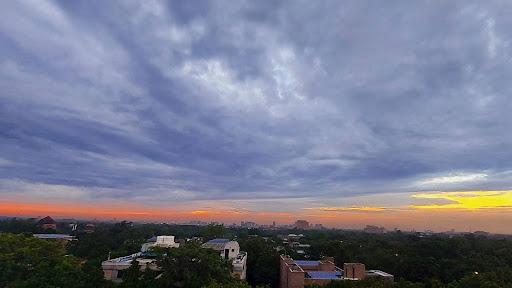
Smarter Forecasts for India’s Monsoon
The summer monsoon season is a crucial period for India, bringing much-needed rainfall to the country’s parched lands. However, the accuracy of monsoon forecasts has long been a challenge, leaving farmers and communities vulnerable to the whims of nature. But thanks to advances in computer modeling and data analysis, scientists are now able to pinpoint the most critical locations for gathering weather data, resulting in significantly improved forecasts.
The Indian monsoon is a complex and unpredictable phenomenon, influenced by a multitude of factors including atmospheric pressure, wind patterns, and temperature gradients. As a result, predicting the timing, intensity, and distribution of rainfall has always been a daunting task. In the past, forecasters relied heavily on traditional methods such as observing weather patterns, analyzing historical data, and making educated guesses. While these methods provided some insight, they were often limited by the lack of reliable data and the complexity of the monsoon system.
In recent years, the Indian Meteorological Department (IMD) has made significant strides in improving the accuracy of monsoon forecasts. The IMD has developed advanced computer models that take into account a wide range of factors, including atmospheric conditions, oceanic patterns, and land surface temperatures. These models are able to simulate the behavior of the monsoon system, allowing forecasters to make more informed predictions about the timing and distribution of rainfall.
Despite these advances, there is still much room for improvement. One of the key challenges facing forecasters is the lack of reliable data from remote and hard-to-reach areas. The Indian monsoon covers a vast territory, stretching from the Himalayas to the Indian Ocean, and encompassing a diverse range of ecosystems and climate zones. As a result, gathering reliable data from these areas can be a significant challenge, particularly during times of extreme weather.
To address this challenge, scientists have turned to advanced computer models and data analysis techniques. By analyzing large datasets and running complex simulations, researchers have been able to identify the most critical locations for gathering weather data. These “sweet spots” are areas where the monsoon system is most sensitive to changes in atmospheric conditions, and where small changes in temperature, humidity, or wind patterns can have a significant impact on the distribution of rainfall.
One of the most promising approaches to improving monsoon forecasts is the use of satellite imaging and remote sensing technology. By analyzing satellite images and data from remote sensing platforms, researchers are able to gather real-time information about atmospheric conditions, cloud cover, and precipitation patterns. This information can be used to improve the accuracy of monsoon forecasts, particularly in areas where traditional data sources are lacking.
Another key area of research is the use of artificial intelligence and machine learning algorithms to analyze large datasets and identify patterns. By training machines to recognize complex patterns in the data, researchers are able to identify relationships between different variables that may not be immediately apparent to human analysts. This can be particularly useful in identifying the most critical locations for gathering weather data, and in improving the accuracy of monsoon forecasts.
The potential benefits of smarter monsoon forecasts are significant. By providing more accurate and reliable information about the timing and distribution of rainfall, forecasters can help farmers and communities better prepare for the monsoon season. This can include actions such as planting drought-resistant crops, stockpiling food and supplies, and taking steps to protect against flooding and landslides.
The importance of improving monsoon forecasts cannot be overstated. The Indian monsoon is a vital source of income for millions of people, providing water for agriculture, industry, and households. The impacts of a failed or delayed monsoon can be severe, including crop failures, food shortages, and economic instability. By providing more accurate and reliable information about the monsoon, forecasters can help mitigate these risks and support the well-being of communities across India.
In conclusion, the development of smarter monsoon forecasts is a critical area of research that has the potential to transform the way we approach weather prediction in India. By identifying the most critical locations for gathering weather data, using advanced computer models and data analysis techniques, and leveraging the power of artificial intelligence and machine learning algorithms, researchers are able to improve the accuracy and reliability of monsoon forecasts. The benefits of this work are clear, and the potential impacts on agriculture, industry, and households are significant. As the Indian monsoon continues to be a vital source of income and sustenance for millions of people, it is essential that we invest in the development of smarter forecasts that can help support the well-being of communities across the country.






